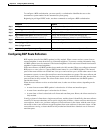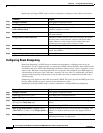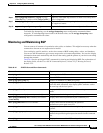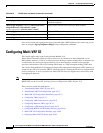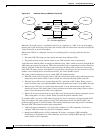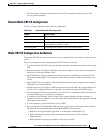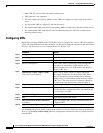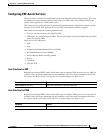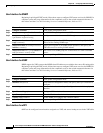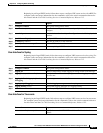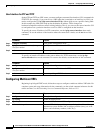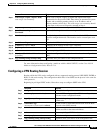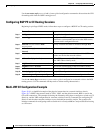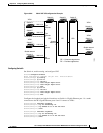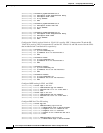
38-75
Cisco Catalyst Switch Module 3110 and 3012 for IBM BladeCenter Software Configuration Guide
OL-12189-01
Chapter 38 Configuring IP Unicast Routing
Configuring Multi-VRF CE
Configuring VRF-Aware Services
IP services can be configured on global interfaces that run within the global routing instance. IP services
are enhanced to run on multiple routing instances; they are VRF-aware. Any configured VRF in the
system can be specified for a VRF-aware service.
VRF-aware services are implemented in platform-independent modules. VRF means multiple routing
instances in Cisco IOS. Each platform has its own limit on the number of VRFs it supports.
VRF-aware services have the following characteristics:
• The user can ping a host in a user-specified VRF.
• ARP entries are learned in separate VRFs. The user can display Address Resolution Protocol (ARP)
entries for specific VRFs.
These services are VRF-aware:
• ARP
• Ping
• Simple Network Management Protocol (SNMP)
• Hot Standby Router Protocol (HSRP)
• Unicast Reverse Path Forwarding (uRPF)
• Syslog
• Traceroute
• FTP and TFTP
User Interface for ARP
Beginning in privileged EXEC mode, follow these steps to configure VRF-aware services for ARP. For
complete syntax and usage information for the commands, refer to the switch command reference for
this release and the Cisco IOS Switching Services Command Reference, Release 12.2.
User Interface for PING
Beginning in privileged EXEC mode, follow these steps to configure VRF-aware services for ping. For
complete syntax and usage information for the commands, refer to the switch command reference for
this release and the Cisco IOS Switching Services Command Reference, Release 12.2.
Command Purpose
show ip arp vrf vrf-name Display the ARP table in the specified VRF.
Command Purpose
ping vrf vrf-name ip-host Display the ARP table in the specified VRF.



